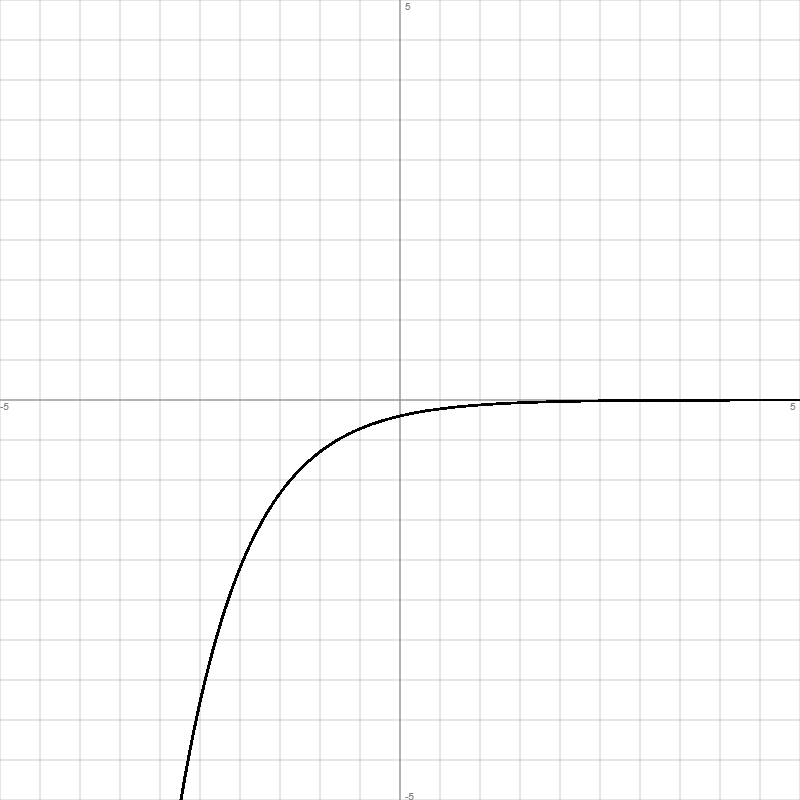
www.michael-buhlmann.de
Funktion: f(x) = -1.8-2x/5, Df = R, Wf = (-∞; 0), reelle Funktion, x -> -∞: f(x) -> -∞, x -> +∞: f(x) -> 0 = y als Grenzkurve ->
| Wertetabelle: | |||||
| x | f(x) | f'(x) | f''(x) | f'''(x) | Besondere Kurvenpunkte |
| -5 | -71.4093 | 83.95 | -98.69 | 115.33 | |
| -4.5 | -39.6719 | 46.64 | -54.83 | 64.07 | |
| -4 | -22.0399 | 25.91 | -30.46 | 35.6 | |
| -3.5 | -12.2444 | 14.39 | -16.92 | 19.78 | |
| -3 | -6.8024 | 8 | -9.4 | 10.99 | |
| -2.5 | -3.7791 | 4.44 | -5.22 | 6.1 | |
| -2 | -2.0995 | 2.47 | -2.9 | 3.39 | |
| -1.5 | -1.1664 | 1.37 | -1.61 | 1.88 | |
| -1 | -0.648 | 0.76 | -0.9 | 1.05 | |
| -0.5 | -0.36 | 0.42 | -0.5 | 0.58 | |
| 0 | -0.2 | 0.24 | -0.28 | 0.32 | Schnittpunkt Sy(0|-0.2) |
| 0.5 | -0.1111 | 0.13 | -0.15 | 0.18 | |
| 1 | -0.0617 | 0.07 | -0.09 | 0.1 | |
| 1.5 | -0.0343 | 0.04 | -0.05 | 0.06 | |
| 2 | -0.0191 | 0.02 | -0.03 | 0.03 | |
| 2.5 | -0.0106 | 0.01 | -0.01 | 0.02 | |
| 3 | -0.0059 | 0.01 | -0.01 | 0.01 | |
| 3.5 | -0.0033 | 0 | 0 | 0.01 | |
| 4 | -0.0018 | 0 | 0 | 0 | |
| 4.5 | -0.001 | 0 | 0 | 0 | |
| 5 | -0.0006 | 0 | 0 | 0 | |
| Graph: | |||||
 | |||||
Abkürzungen: Df = (maximaler) Definitionsbereich, f(x) = Funktion, f'(x) = 1. Ableitung, f''(x) = 2. Ableitung, f'''(x) = 3. Ableitung, H = Hochpunkt, L = Lücke, N = Nullstelle, P = Polstelle, R = reelle Zahlen, S = Sprungstelle, T = Tiefpunkt, W = Wendepunkt, WS = Sattelpunkt, Wf = Wertebereich, {.} = ein-/mehrelementige Menge, [.; .] = abgeschlossenes Intervall, (.; .) = offenes Intervall, [.; .), (.; .] = halboffenes Intervall, ∞ = unendlich.
Bearbeiter: Michael Buhlmann